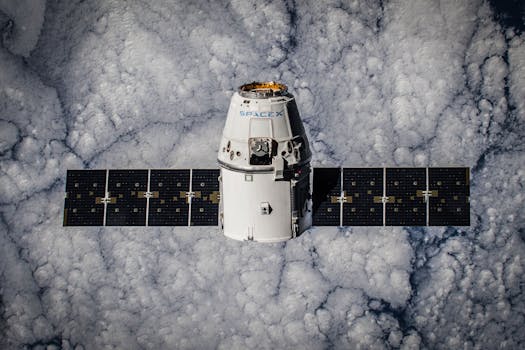MEO Satellites: Revolutionizing Global Communication with Medium Earth Orbit Technology

MEO Satellites: Revolutionizing Global Communication with Medium Earth Orbit Technology
MEO satellites, or Medium Earth Orbit satellites, are a type of satellite that operates in an orbit between 2,000 and 36,000 kilometers above the Earth’s surface. This unique orbit allows MEO satellites to offer a range of benefits, including lower latency, wider coverage, and increased reliability, making them an attractive solution for global communication. At the forefront of MEO satellite technology are companies like O3b Networks, which has launched a constellation of MEO satellites to provide high-speed, low-latency connectivity to underserved communities around the world.
The MEO satellite system has several key advantages over traditional Geostationary (GEO) satellites. One of the main benefits is reduced latency, which is the delay between the time data is sent and the time it is received. MEO satellites have a latency of around 10-20 milliseconds, compared to GEO satellites which can have a latency of up to 600 milliseconds. This makes MEO satellites ideal for applications that require real-time communication, such as video conferencing, online gaming, and financial transactions.
The History and Development of MEO Satellites
The concept of MEO satellites has been around for several decades, but it wasn’t until the 1990s that the first MEO satellite systems were developed. One of the earliest MEO satellite systems was the Iridium constellation, which was launched in the late 1990s and provided global coverage for mobile phone and data communications. However, the high cost of launching and operating MEO satellites, combined with the limited demand for their services, meant that the Iridium system was not commercially successful.
In recent years, there has been a resurgence of interest in MEO satellites, driven by advances in technology and the growing demand for global communication services. The development of new launch vehicles and satellite manufacturing techniques has made it possible to launch MEO satellites at a lower cost, while advances in antenna and transmitter technology have improved the performance and efficiency of MEO satellite systems. Today, there are several MEO satellite systems in operation, including the O3b Networks constellation, which provides high-speed, low-latency connectivity to underserved communities around the world.
Applications and Benefits of MEO Satellites
MEO satellites have a wide range of applications, including telecommunications, navigation, and Earth observation. One of the main benefits of MEO satellites is their ability to provide global coverage, making them ideal for applications that require communication over long distances. MEO satellites are also more resistant to interference and jamming than GEO satellites, making them a more secure option for military and government communications.
In addition to their technical benefits, MEO satellites also offer a range of economic and social benefits. By providing high-speed, low-latency connectivity to underserved communities, MEO satellites can help to bridge the digital divide and promote economic development. MEO satellites can also be used to provide critical communication services during natural disasters and other emergencies, helping to save lives and facilitate relief efforts.
Challenges and Future Developments
Despite the many benefits of MEO satellites, there are also several challenges that must be addressed in order to fully realize their potential. One of the main challenges is the high cost of launching and operating MEO satellites, which can be prohibitively expensive for many organizations. There are also technical challenges associated with operating MEO satellites, including the need for advanced antenna and transmitter technology, as well as sophisticated satellite control systems.
Looking to the future, it is likely that MEO satellites will play an increasingly important role in the global communication landscape. Advances in technology will continue to drive down the cost of launching and operating MEO satellites, making them more accessible to a wider range of organizations. There will also be a growing demand for MEO satellite services, driven by the increasing need for global communication and the growing importance of digital technologies in modern life.
As the demand for MEO satellite services continues to grow, we can expect to see new and innovative applications of this technology. For example, MEO satellites could be used to provide high-speed, low-latency connectivity to autonomous vehicles, or to support the development of smart cities and other IoT applications. Whatever the future holds, it is clear that MEO satellites will play a critical role in shaping the global communication landscape and promoting economic and social development around the world.
